Trends that are transforming the print industry
Trends that are transforming the print industry
Digital developments over the last decade have changed the print industry beyond recognition, and it continues to evolve. The latest technology (software and hardware) is now essential for printers and print manufacturers to remain competitive. Introducing systems like Overall Equipment Effectiveness (OEE) or Computerised Maintenance Management Systems (CMMS) can be extremely beneficial for your print and packaging manufacturing business, helping to improve its efficiency and increase productivity by completing tasks in a shorter timeframe and reduce waste, thus maximising your overall business performance. Most businesses could benefit from this and, with the pace of advances in technology and the evolving world of printing, this has become even more crucial in the print sector than ever. John Roberts, director of Idhammar Systems talks about current print sector trends and how businesses can benefit from them.
Industry 4.0 and the power of data
The cost savings associated with the automation of process-oriented tasks has long been a business driver for implementing manufacturing systems that reduce reliance on human operators. The added benefit of increasingly intelligent systems means decision-making has become more data-driven, guiding investment and shaping the way that the print industry operates. Manufacturing and production lines have become significantly more efficient and effective as a result. Yet the improvements we will see in the next decade are set to completely transform the print sector, as advances in connectivity means critical issues that need attention will be identified quicker with root cause analysis available almost instantly. The continued rise of Industry 4.0, the connection between smart machines that enables more intelligent data sharing, is thus set to increase productivity and reduce waste even further. Print businesses will be able to refine their processes, conserve precious resources and optimise results through the capture, measurement and analysis of more and more granular data. OEE systems are already capable of powerful analysis, taking full advantage of the interconnectivity available in the printing environment. For example communicating faults or failures in the production line instantly to CMMS software that can arrange for maintenance/repairs and identifying opportunities for improvement at every stage of the printing process. The key here is to ensure the solutions print businesses implement keep up with the pace of the digital advances in the market place to ensure they take full advantage of the benefits of Industry 4.0.
3D printing
Also known as Additive Manufacturing (AM), 3D printing is one of the most significant developments in the print sector. According to recent research, the sale of material used for AM has already increased and by 2025, $69 billion will be spent in materials for AM systems worldwide. 3D printing has opened up the print sector as a key supplier to new markets such as healthcare; for example, 98% of the hearing aids that we see today, are created with the use of a 3D printers as all of them are custom-made and require high technology and precision. Today 3D printers can also create an exact replica of some body parts and, potentially, organs. Such an advanced, and in some cases, life-saving technology, requires maintaining a printing machine to perfect conditions and ensuring that it works efficiently at all times. It goes without saying that print needs to be increasingly reliable and maintenance improvement software will continue to be critical to these operations.
Reduced waste in digital printing
The transition from conventional to digital printing has been slow but steady so far. Due to fluctuating market demand, companies have started turning to digital printing for its advantage of speed of response to high-volume requests. Near perfect operations in the print sector are essential, especially when it comes to packaging in the food and drink industry where ‘right first time’ is an industry-wide mantra and ‘zero waste’ is the ultimate goal for most operations. Print and packaging manufacturers that have exhausted all other opportunities for improvement (or at least the ‘low hanging fruit’) are now looking to automate the quality assurance process, to remove human error wherever possible. Investing in the right technology is essential as businesses aim to conserve resources, raw materials, and energy, whilst meeting tighter and tighter deadlines to satisfy customers.
It’s clear that printing has changed in the last few years moving away from long-runs towards the on-demand or short-turnaround demands of the sector’s increasingly varied clients. As printing processes become more sophisticated, so does the materials, equipment and machinery used to produce the end product, and businesses are justifiably investing in the latest software solutions and applications to improve their competitive advantage. Whilst systems like CMMS and asset management software have been around for decades, they really should not be overlooked as first and foremost, they help print and packaging manufacturers ensure they have the basics in place – effectively maintained equipment that performs exactly as expected, every time. Without this reliability and predictability, it’s near impossible to measure or drive the improvement that OEE systems and manufacturing execution software is designed to support. And only with reliable equipment and a culture of continuous improvement will the print and packaging sector be able to achieve world class manufacturing standards.
For more information about Idhammar Systems, visit: http://www.idhammarsystems.com/
ENDS




